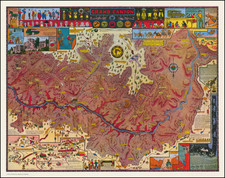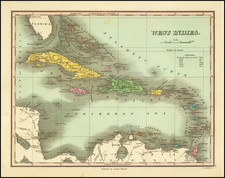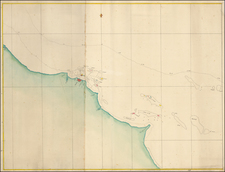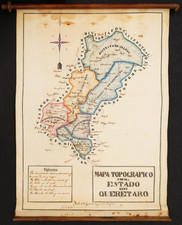Rare Large Spanish Language Railroad Map of Mexico Published By Gaylord Watson
Large, detailed and quite rare folding map of Mexico, in Spanish, at a time of increasing U.S. investment, with railroads, both completed and projected, shown, with indication by color whether narrow or wide gauge.
The map was issued during the so-called Porfiriate, at a point where the Mexican Railroads, with the help of foreign investment, were expanding at a fast rate and trade with the United States and the rest of the World was beginning to flourish, under the leadership of Porfirio Diaz.
Approximately 50 Mexican Railroad Lines are named, with extensive data given in the inset at the top right. A second statistical talbe shows production by Mexican State, broken down by Urban and "Rustic" production.
The major ocean lines of transit from New Orleans and Galveston are shown. At the bottom left, details are given on the amount of goods imported to Mexico and exported to various countries of the world isgiven up to 1880. With a population table by state for 1882 at the bottom.
Porfiriato
The rule of Porfirio Díaz (1876–1911) was dedicated to the rule of law, suppression of violence, and modernization of all aspects of the society and economy. Diaz was an astute military leader and liberal politician who built a national base of supporters. To avoid antagonizing Catholics, he avoided enforcement of anticlerical laws. The country's infrastructure was greatly improved, thanks to increased foreign investment from Britain and the US, and a strong, stable central government.
Increased tax revenue and better administration dramatically improved public safety, public health, railways, mining, industry, foreign trade, and national finances. Díaz modernized the army and suppressed some banditry. After a half-century of stagnation, where per capita income was merely a tenth of the developed nations such as Britain and the US, the Mexican economy took off and grew at an annual rate of 2.3% (1877 to 1910), which was high by world standards.
Mexico had few factories by 1880, but then industrialization took hold in the Northeast, especially in Monterrey. Factories produced machinery, textiles and beer, while smelters processed ores. Convenient rail links with the nearby US gave local entrepreneurs from seven wealthy merchant families a competitive advantage over more distant cities.
Rarity
The map is very rare on the market.
The map is not listed in OCLC and there are no records of the map selling in recorded dealer or auction catalogs. Philips lists an 1883 example in the Library of Congress.











![[ Practices of the Outina Warriors ] Outinae milites ut caesis hostibus utantur. XV.](https://storage.googleapis.com/raremaps/img/small/97802.jpg)


![Carte Des Etats-Unis Du Mexique 1836 [Republic of Texas]](https://storage.googleapis.com/raremaps/img/small/103417.jpg)

